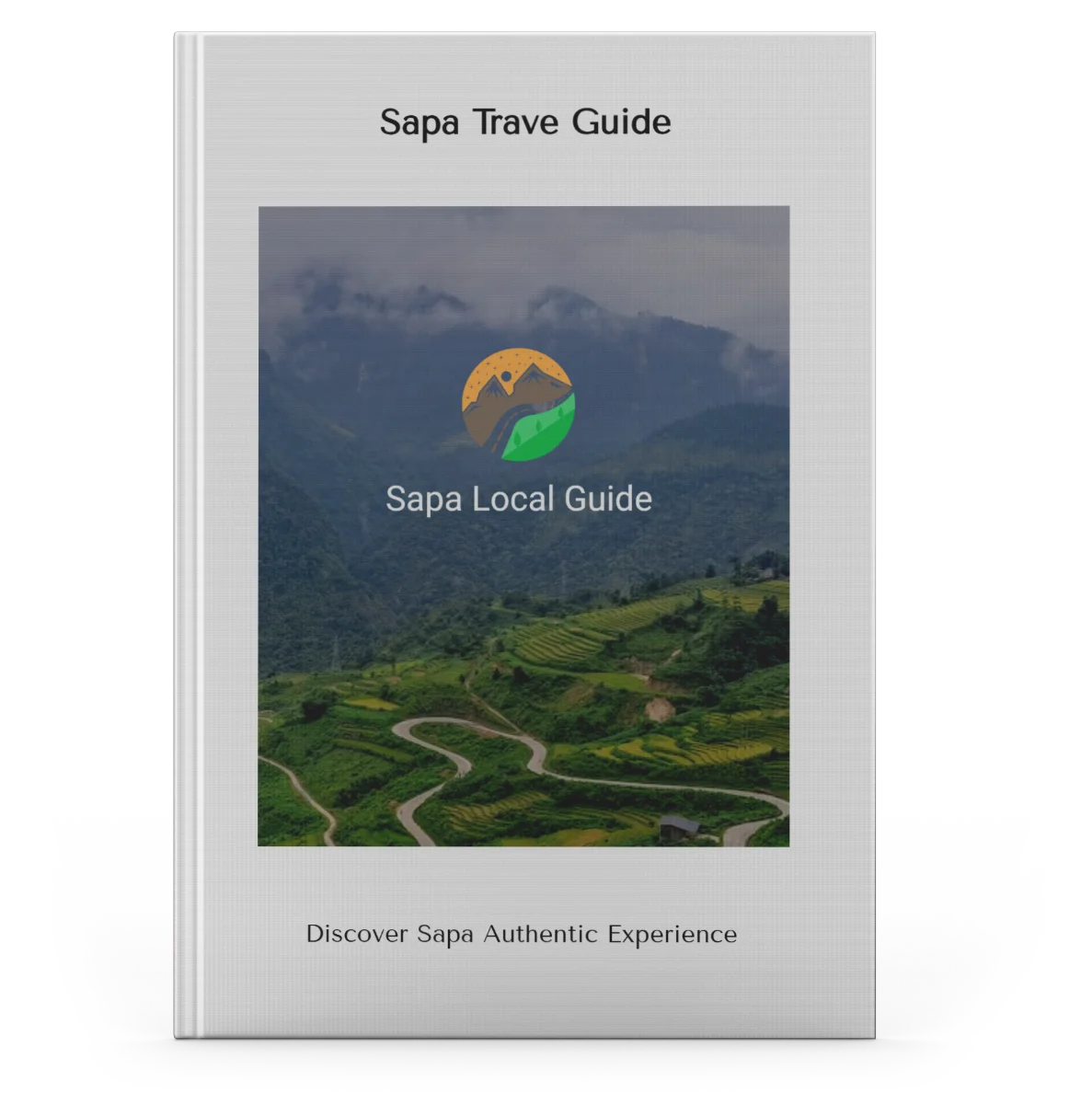![]()
Authentic Experience of Sapa
Experience Sapa stunning landscapes with local guide trekking tours. Discover terraced rice fields, ethnic villages, breathtaking views. Book your adventure now!
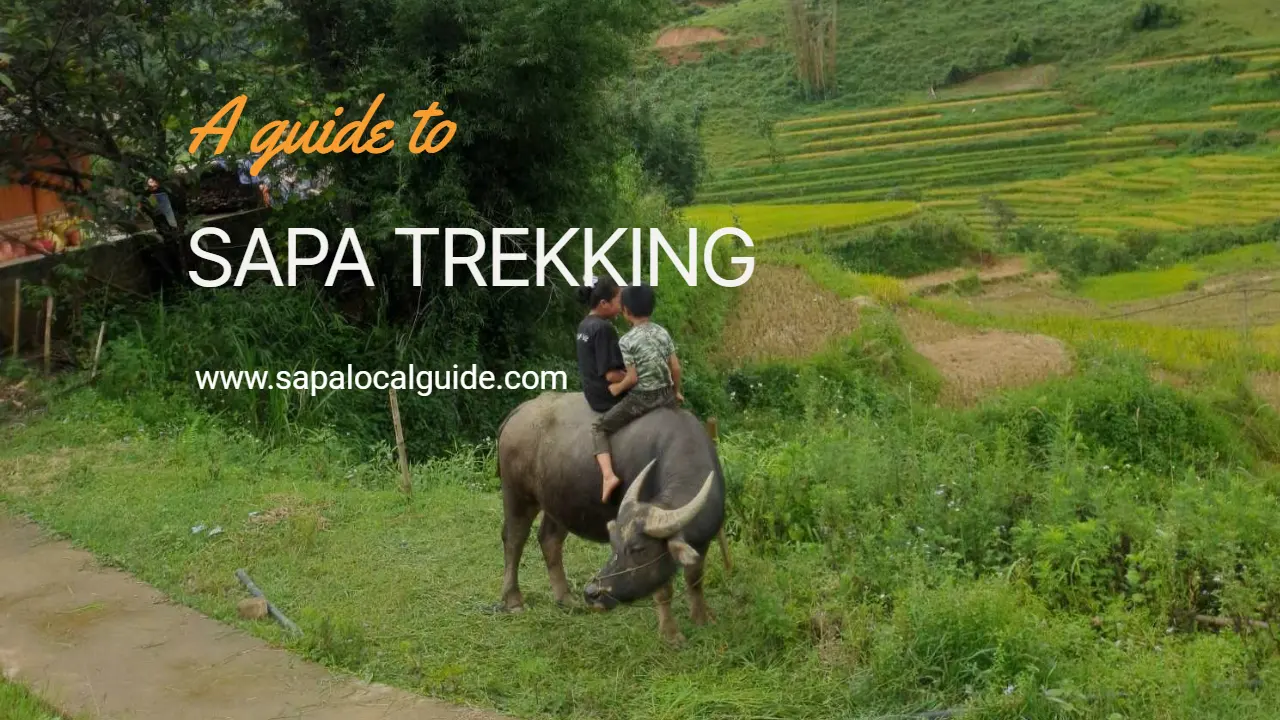
Trekking in Sapa through rice fields, mountains, and forests is a must-do in Vietnam. Explore local minority villages and enjoy the stunning views. A local guid trek in Sapa is an experience you'll remember for a long time. This local guide will help you pick the right trek and prepare for an amazing adventure
Before we share our tips and Local guide for trekking in Sapa, let's first talk about why local trekking is the best thing to do in Sapa—and maybe even in all of Vietnam.
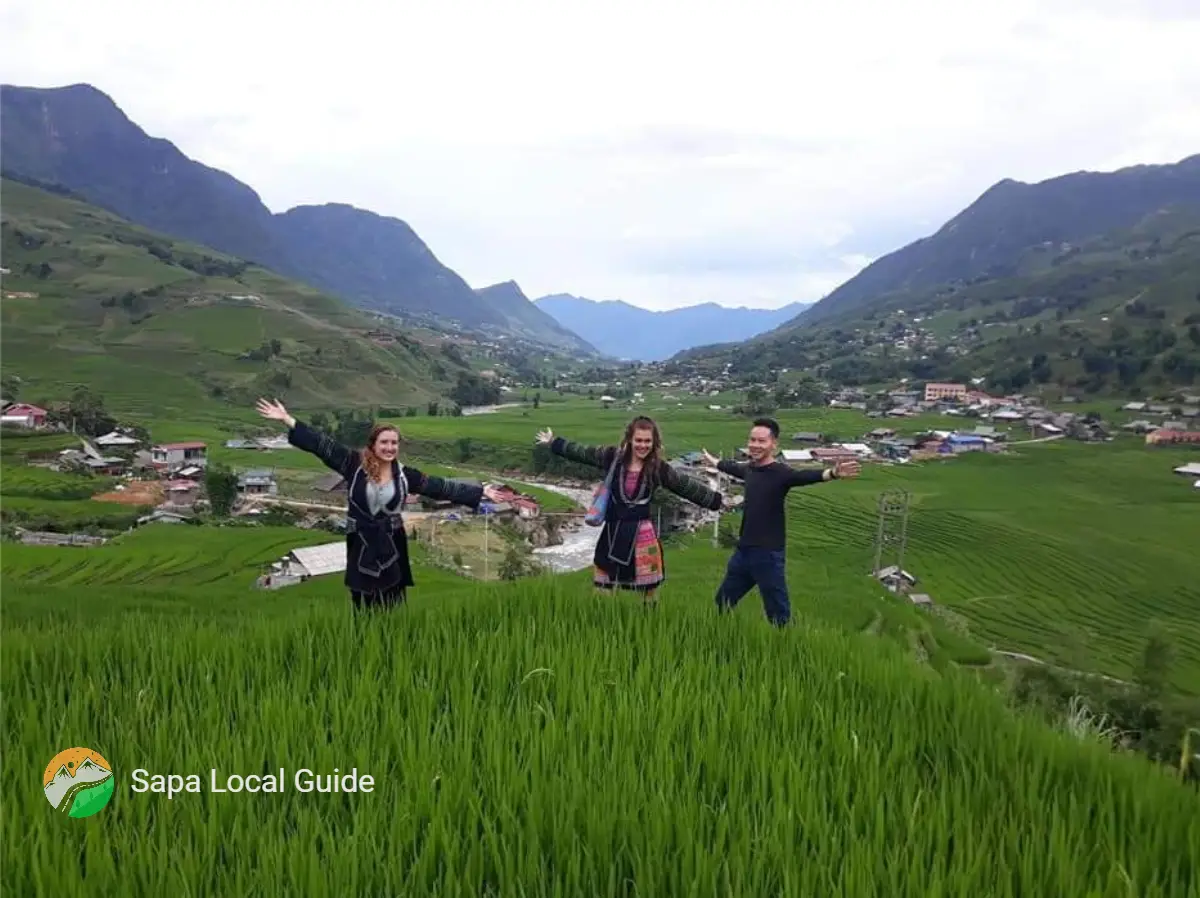
The main reason people go Local trekking in Sapa is to see the famous terraced rice fields that seem to go on forever. Local farmers have shaped these fields into the mountains, and they change with each season, showing off different kinds of beauty all year round.
About local tour trekking experience:
Sapa 1 Day

1 day experience,Rice fields, valley, villages. Moderate to challenging, Private,Vegan-friendlyCultural immersion & active adventure
Motorbike Tour

1 day experience,Rice fields,waterfall.Challenging,Private tours friendly Cultural immersion, active adventure
Sapa 2 Days

2 days 1 night experience. Moderate to challenging, adventure. Mountains, valleys, rice fields and villages. Vegan-friendly
Sapa 3 Days

3 days 2 night experienc, Moderate to challenging. Mountains, valley, rice fields & villages. Private tours. Vegan-friendly
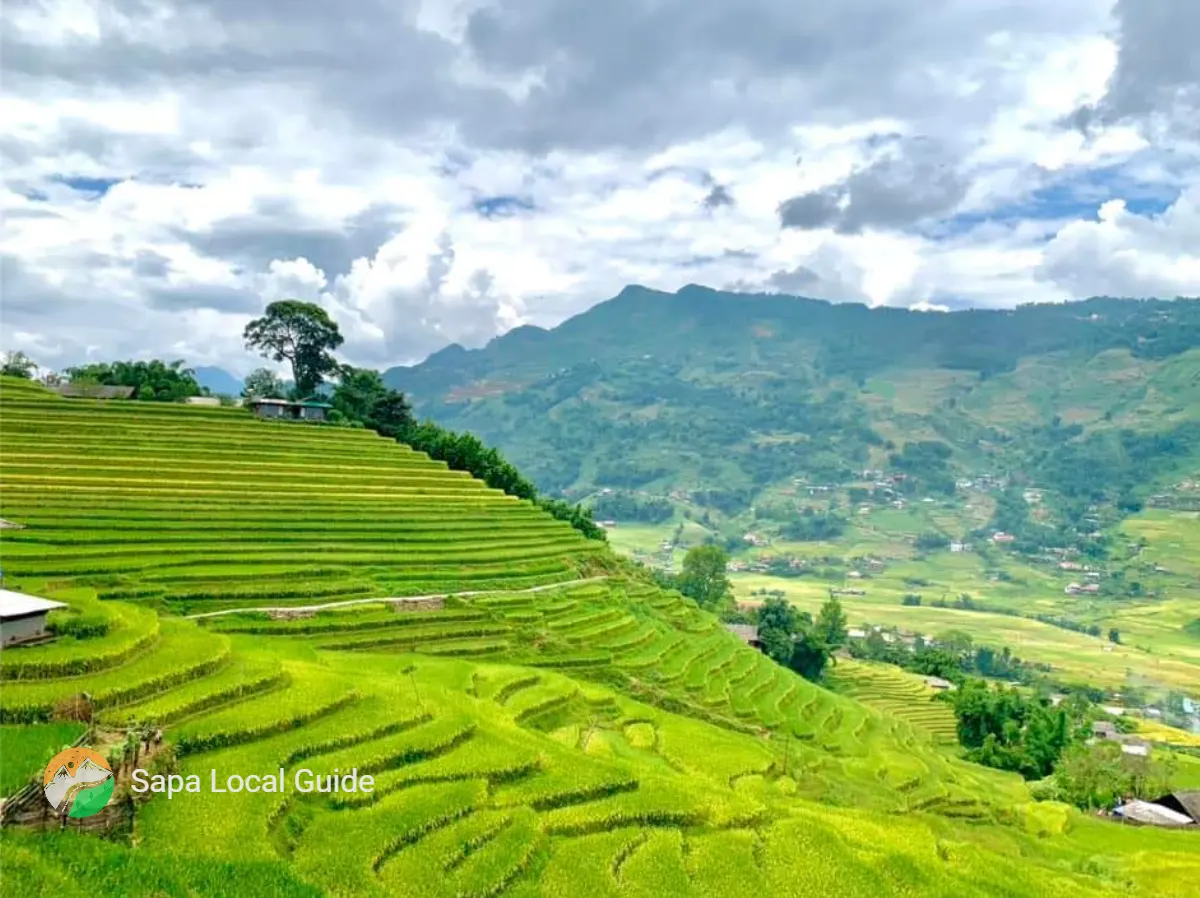
A trek will take you through the amazing nature of Muong Hoa Valley. You’ll walk through the beautiful Hoang Lien mountains, cross clear streams, and explore thick bamboo forests. At every turn, you’ll see something new, like calm waterfalls or wide views of the valley. The different landscapes and untouched nature make it perfect for nature lovers and photographers alike.
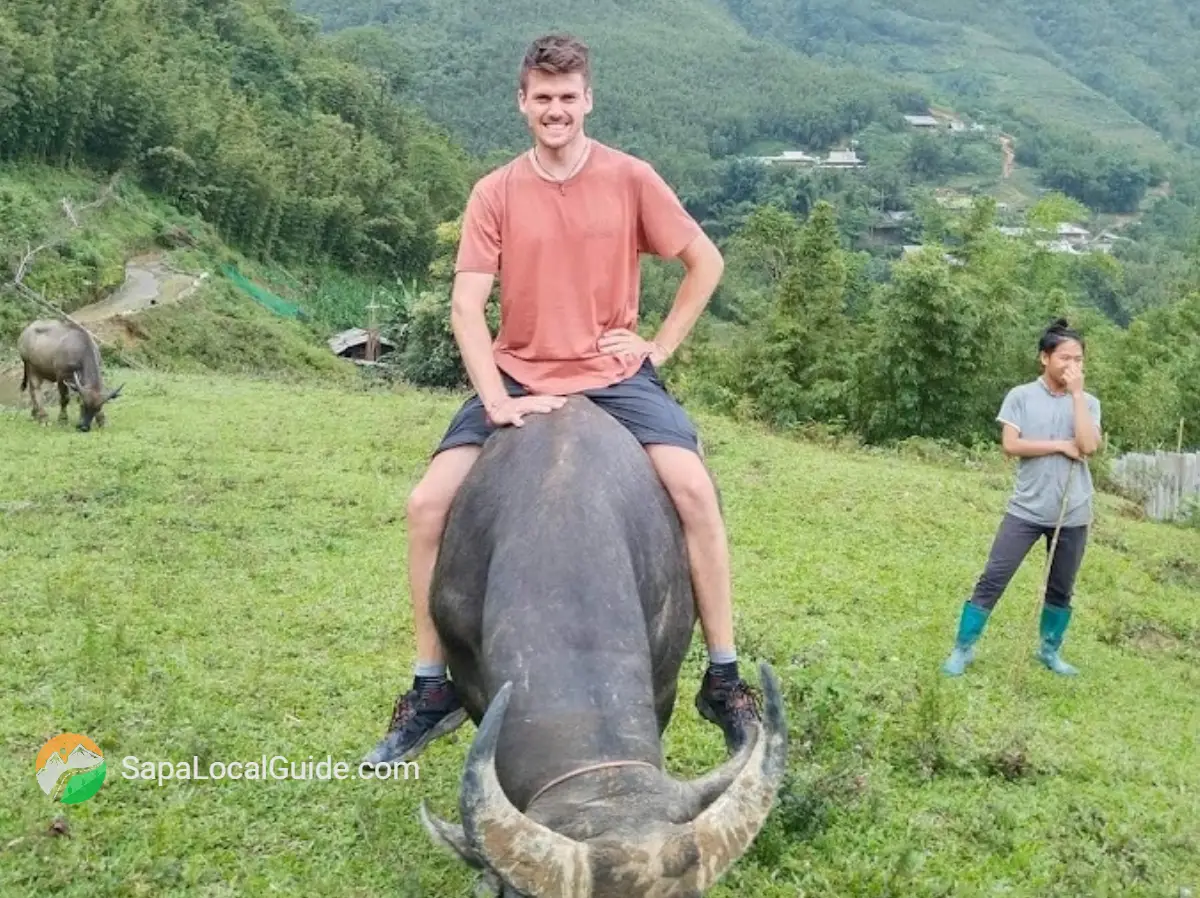
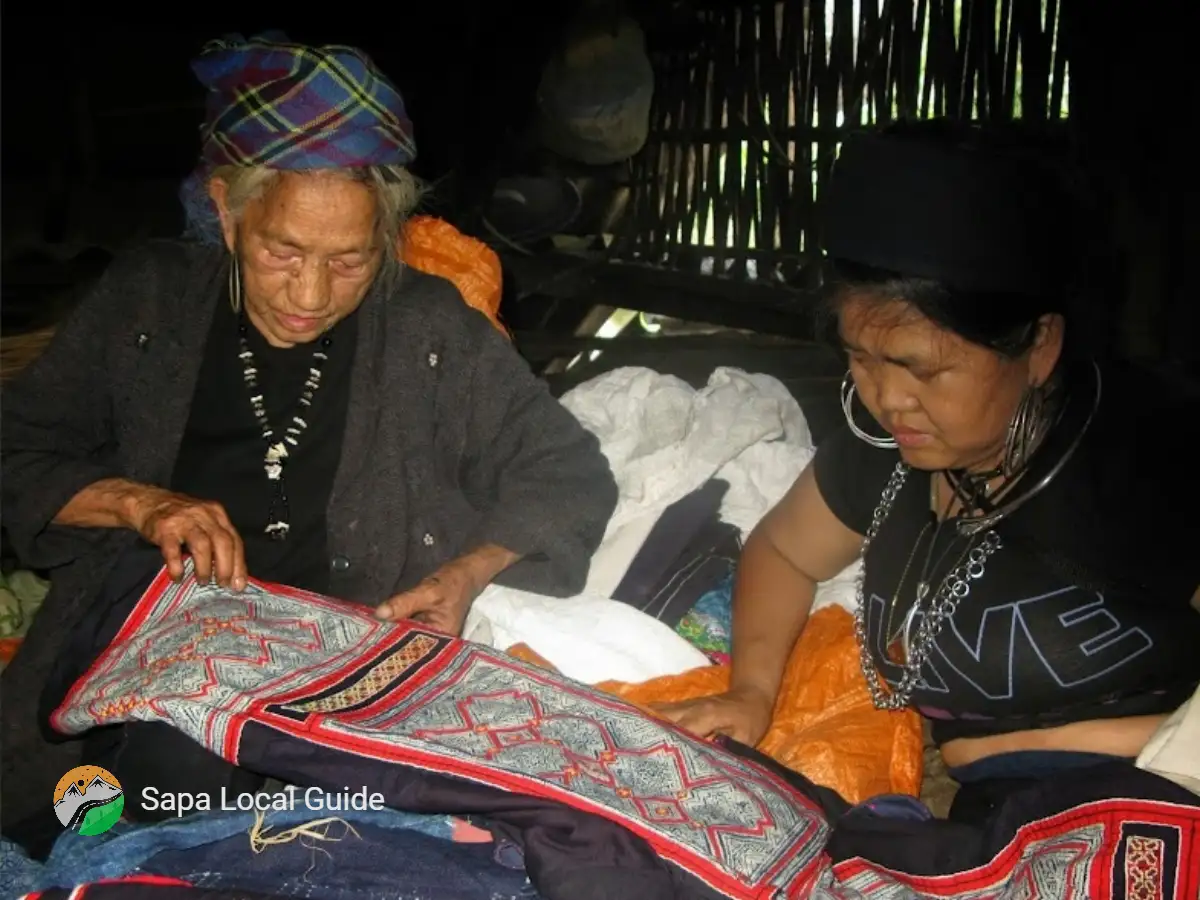
Local Trekking in Sapa isn’t just about the beautiful views; it’s also about meeting the people who live there. You’ll meet the Hmong, Dao, Tay, and Giay ethnic groups, each with their own special customs, traditions, and colorful clothes. When you visit their villages, you’ll learn about their daily lives, see their traditional homes, and admire their detailed handicrafts. It’s like taking a step back in time. The bright clothing and friendly hospitality of these communities make your trekking experience even more meaningful and cultural.
=>More about Hmong people here.
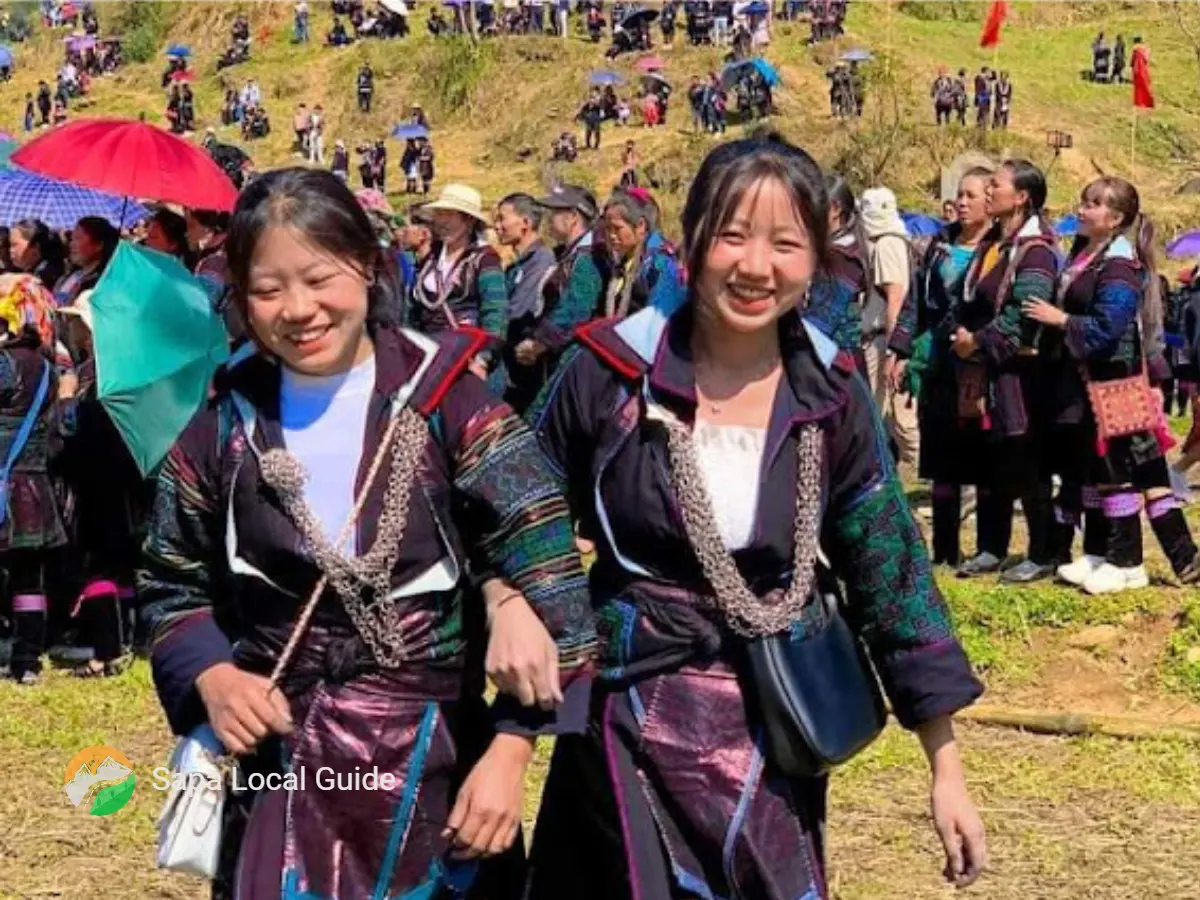
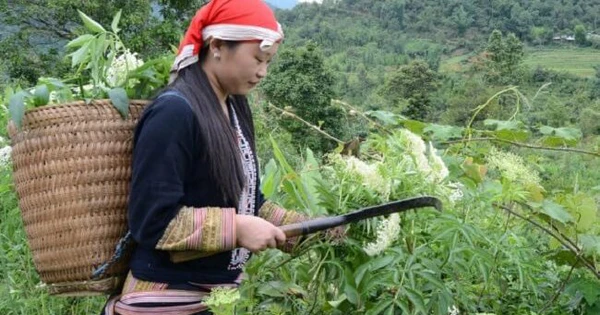
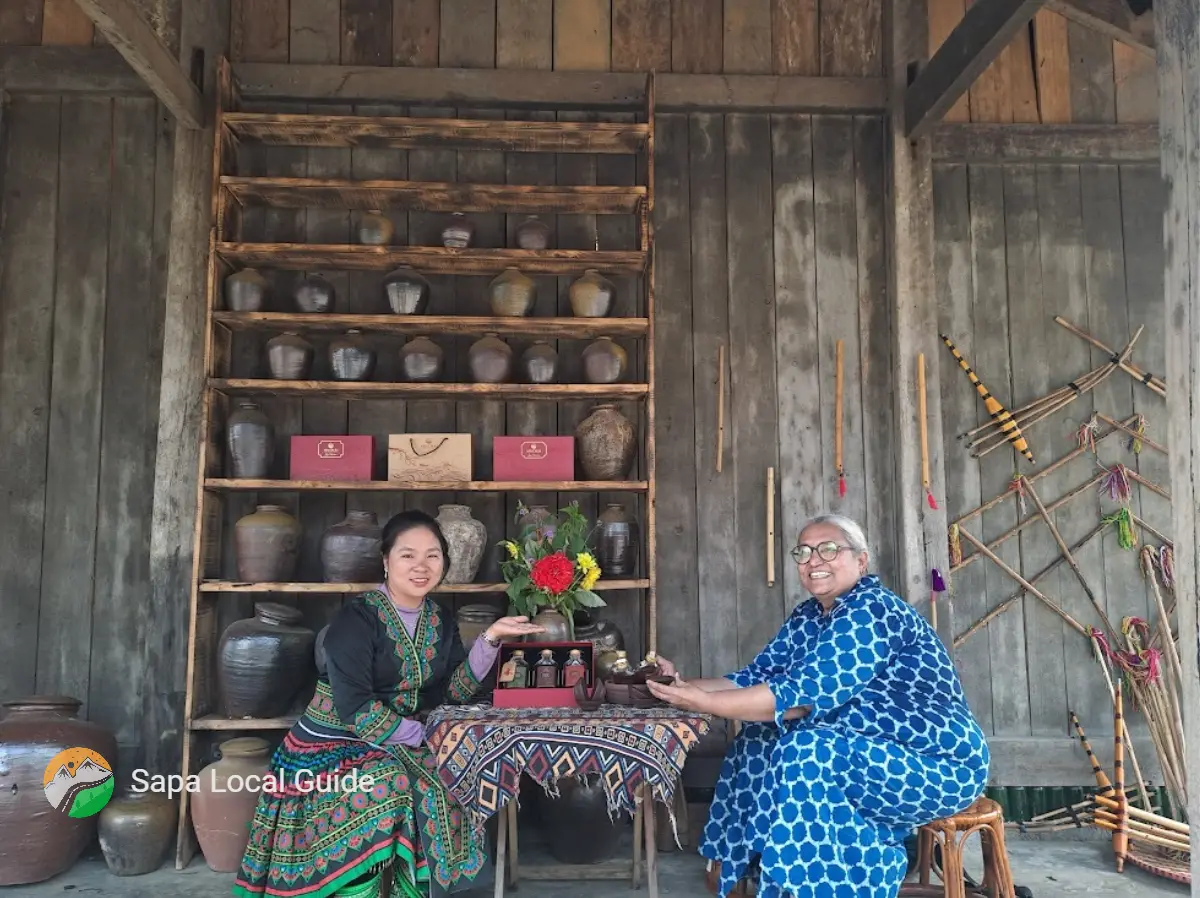
For a more unforgettable Local tour guide trekking experience, stay overnight at a local homestay. These family-run places let you see how ethnic people live each day. You'll eat meals cooked over a fire, share stories at dinner, and maybe even enjoy a traditional herbal bath. Though homestays are usually simple, the genuine warmth of your hosts will make this a memory you'll treasure forever.
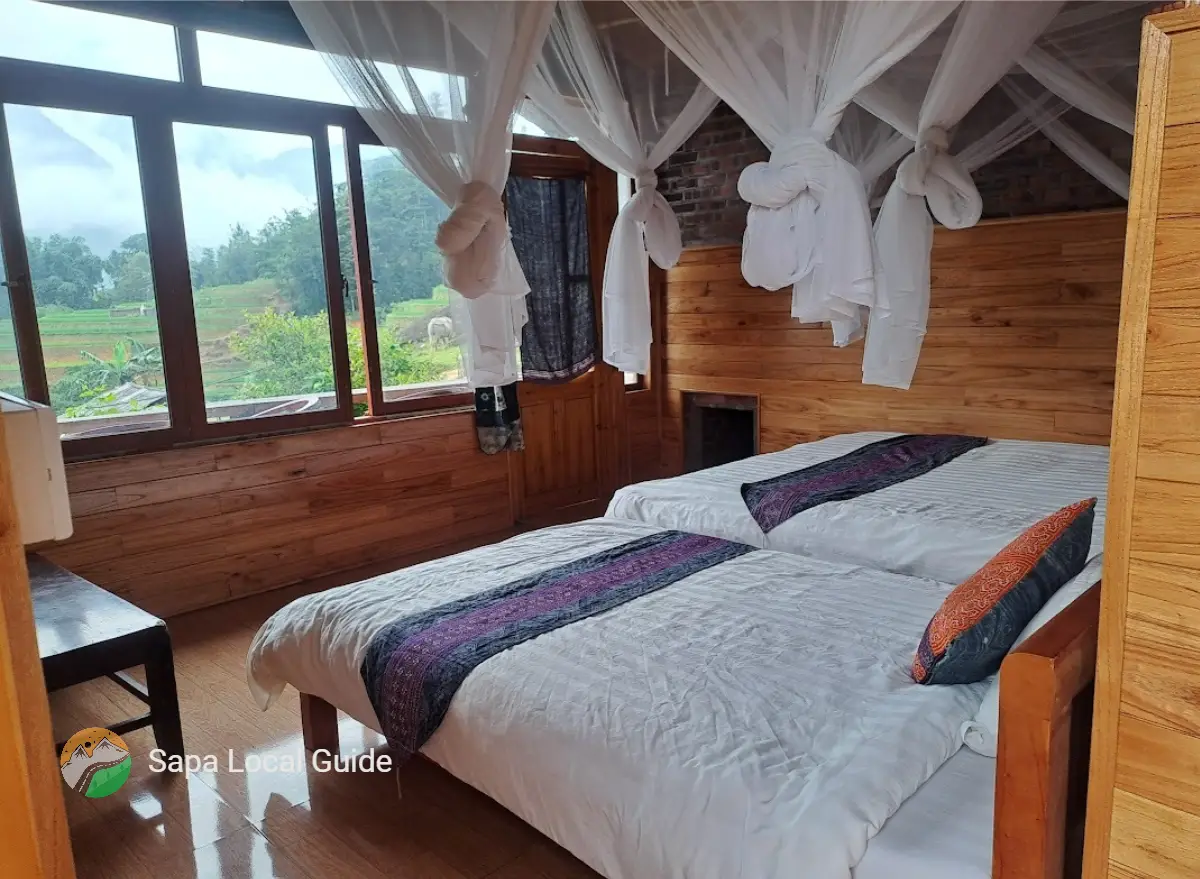
This section provides you with important tips for hiking in Sapa. These tips will help you plan your adventure better.
The best time to go a Local trekking in Sapa depends on the month because the views and weather change throughout the year. The famous green rice fields aren't there all year. Here’s a simple guide to help you choose the best time.
Best Sapa trekking conditions and Most stunning time of the year to visit Sapa.
January – cold winter
Trekking here is cold, with more clouds and no rice fields in sight.
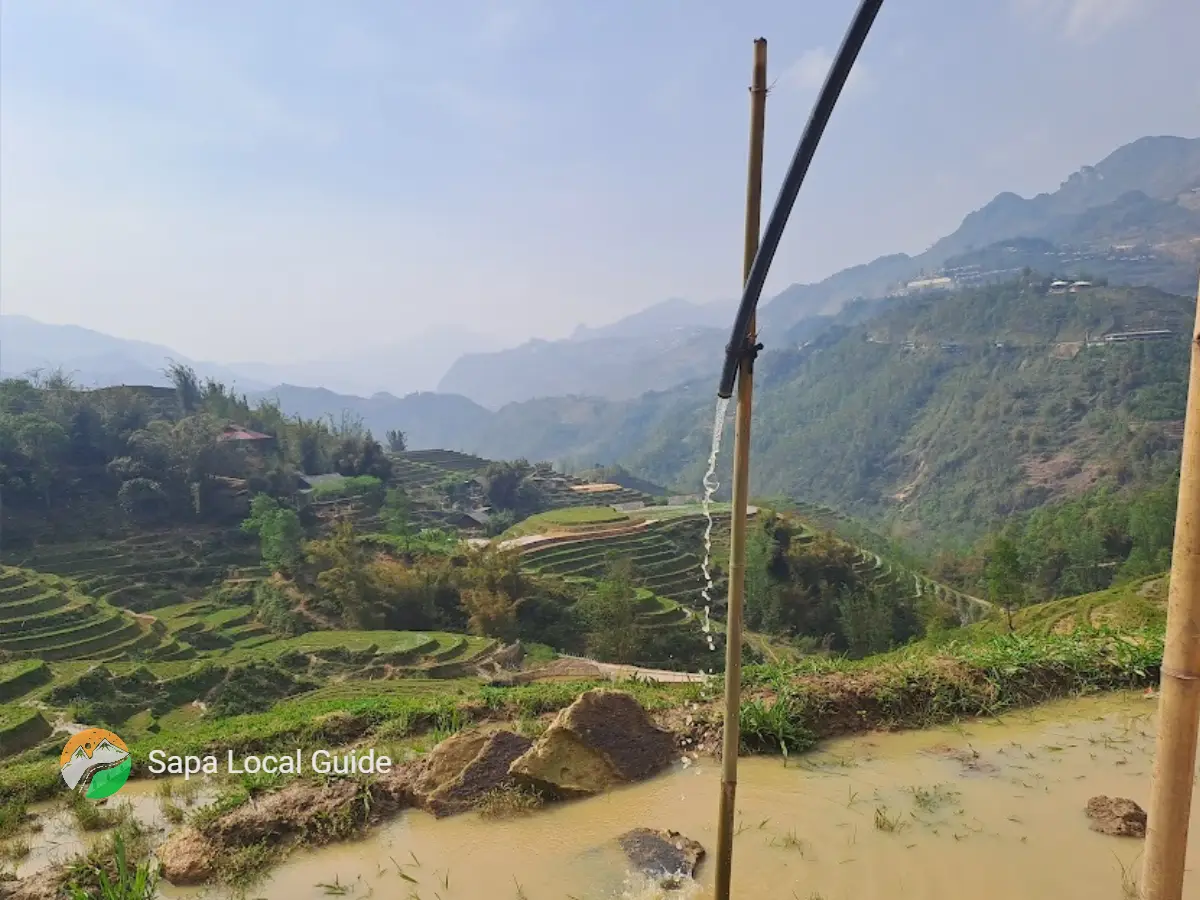
February – end of winter
It's chilly, but the weather is starting to warm up a bit. There are no rice fields around.
March – blossoms appear
One of the best times to go trekking in Sapa is when it’s not too rainy, hot, or cold. Plus, there won’t be any rice fields around.
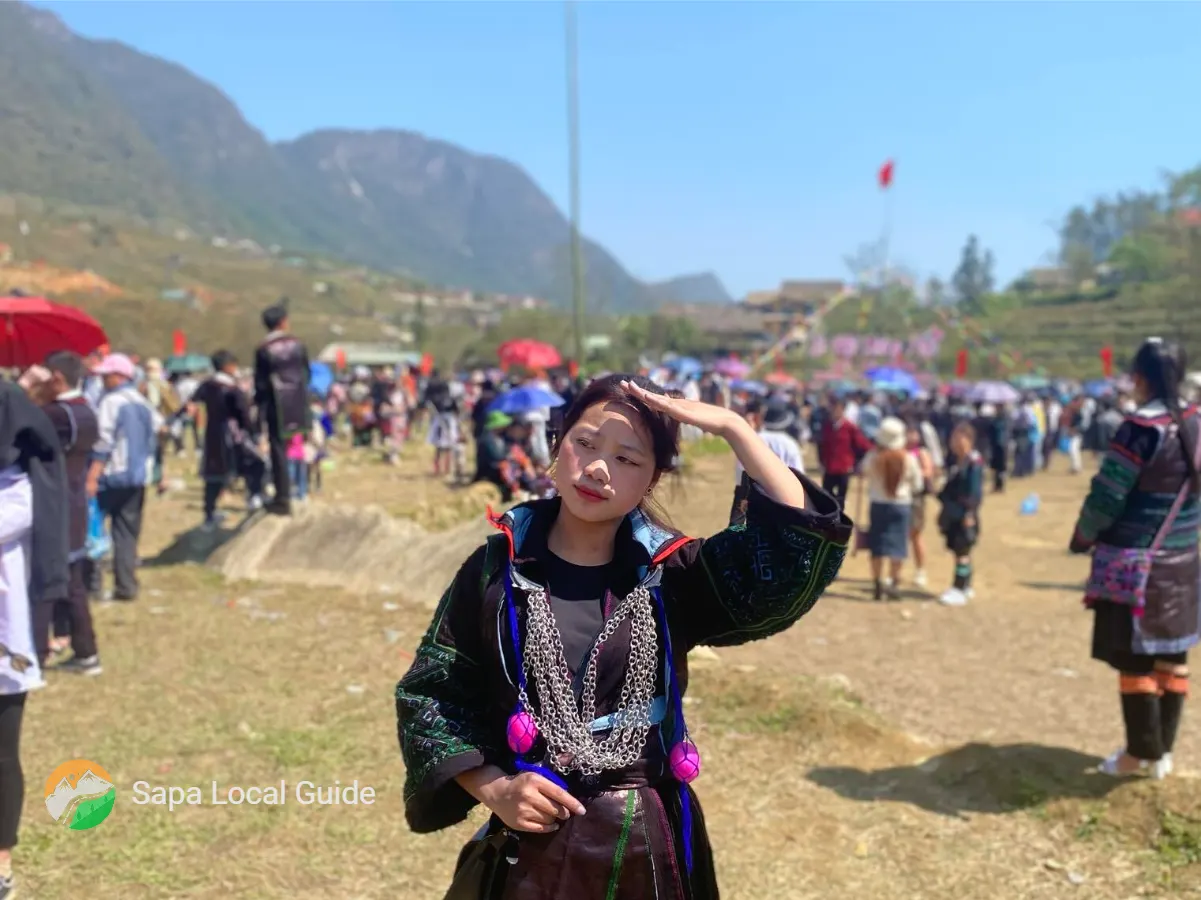
April – preparing the land
In terms of weather, this is a great month for trekking. There’s little rain, the cold is gone, and it’s not too hot yet. Farmers start getting their rice fields ready.
May – watering season
The rainy season has begun. It’s not raining heavily yet, but the weather is getting warmer. The rice fields are now full of water, making them look like beautiful mirrors.
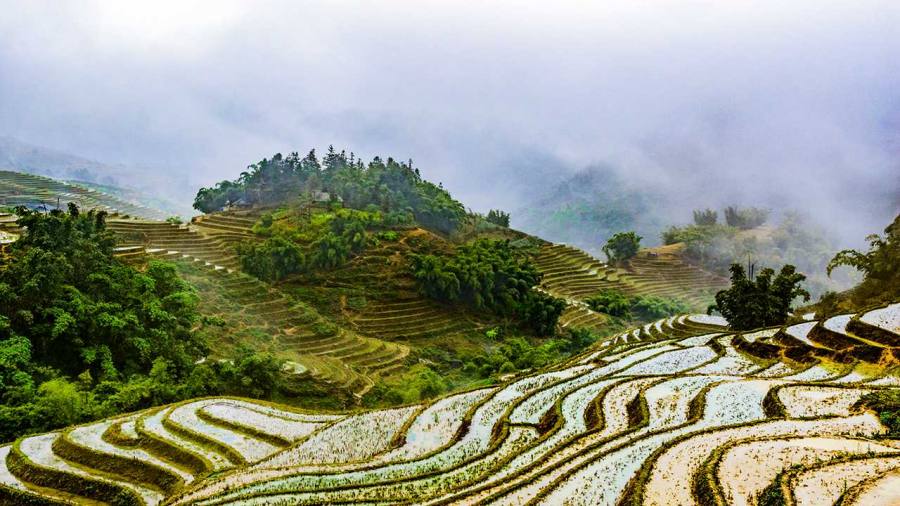
June – sprouts start to show
The weather is getting hotter and it’s raining more often. Rice sprouts are starting to grow.
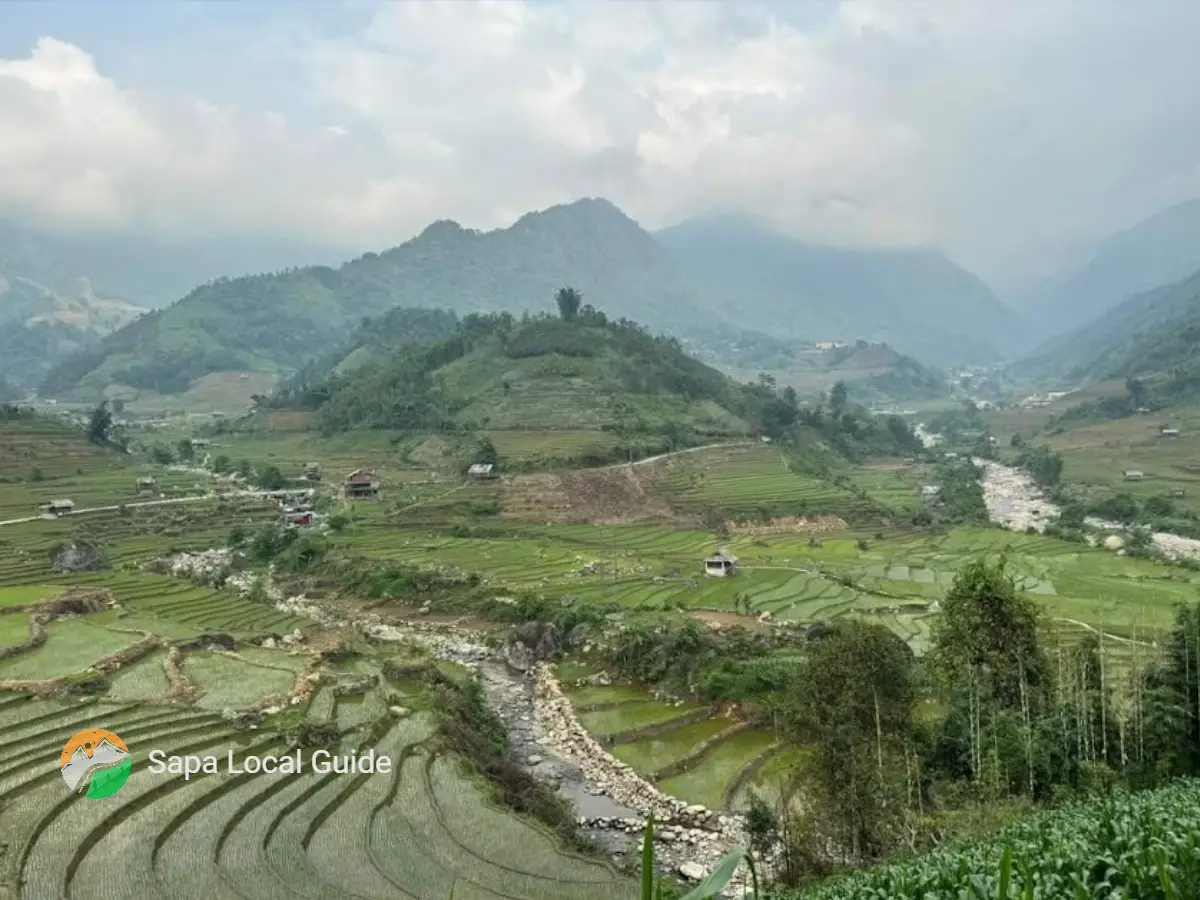
July – fields are getting greener
Even though it rains a lot and it's hot, the fields are turning greener and taller. This makes it one of the most beautiful times of the year
August – fields at their best
It’s hot with a bit of rain, but it gets drier by the end of the month. The fields are a bright green, and harvesting begins at the month’s end
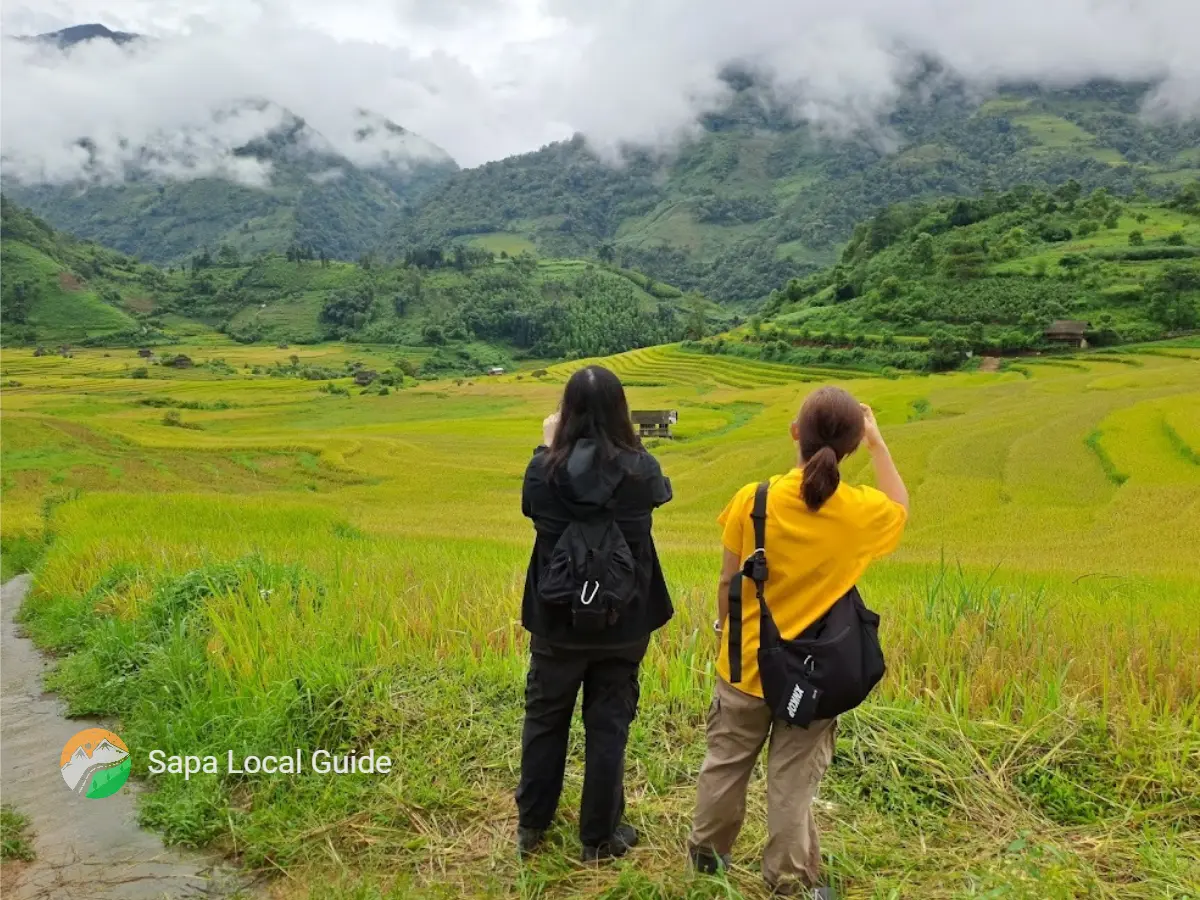
September – harvest time
The weather is warm, and it's still rainy season, but the heaviest rains are over. The fields are turning golden and are ready for harvest
October – late harvest
The weather is cooler and less humid with less rain, making it one of the best months for local trekking in Sapa
November – end of harvest
The weather is cool and dry this month. There are no rice fields, but it's a perfect time for local trekking.
December – early winter
The weather is chilly today, with no rain but lots of clouds. There are no rice fields around.
=>Read more about Best time to visit Sapa Here.
Before you choose your trek in Sapa, the first step is figuring out how to get there. Your choice of transportation will affect how much time you have for trekking and other fun activities in Sapa. It takes about 5 to 6 hours by bus from Hanoi to Sapa, so if you’re traveling round-trip, you might lose a whole day unless you go at night. Here are your options:
Limousine Bus: This is a super comfy and affordable option with VIP-like seats. The trip takes around 5 hours from Hanoi to Sapa and runs during the day. This means you’ll enjoy a comfortable ride, but you’ll spend some daytime traveling.
Sleeper Bus: You can choose between standard and VIP options. VIP buses have more space and privacy but cost a bit more. Traveling overnight lets you get to Sapa early, so you can enjoy more time there. However, sleeping on these buses can be hard for some people, and there are safety concerns to think about.

Sleeper Trains:
Sleeper trains cost more than buses, but they are safer and more comfortable. The trip includes a ride from Lao Cai Train Station to Sapa. Tourist trains are clean and have good facilities, making the ride fun even though it can be bumpy
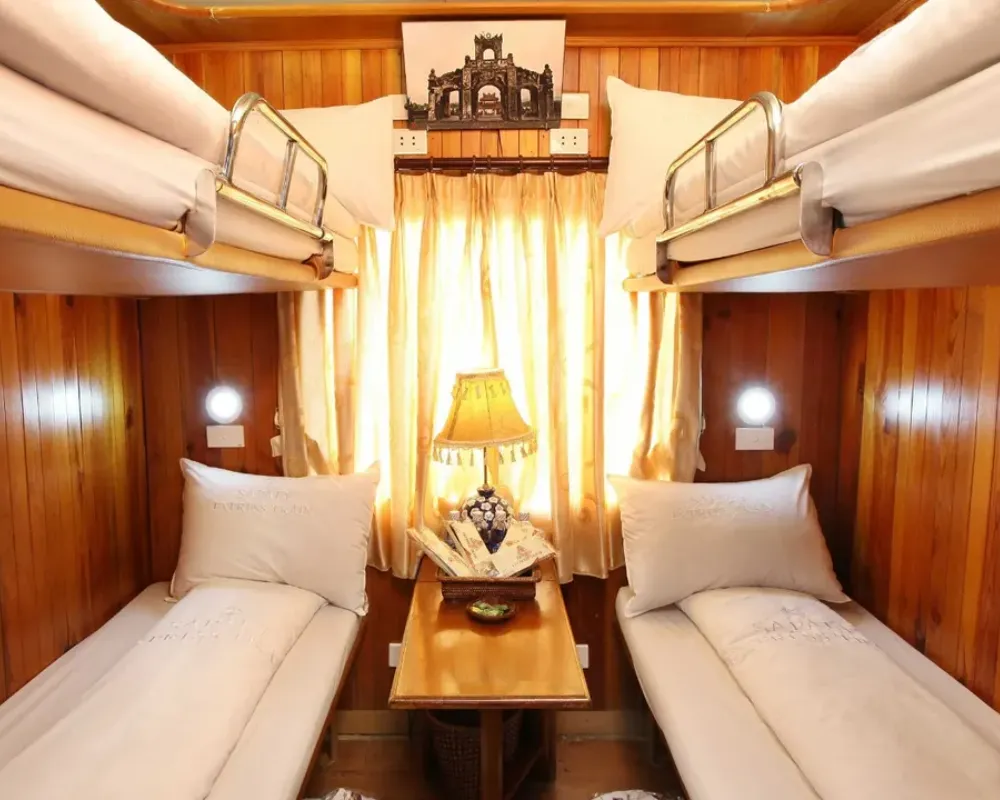
Sleeper Trains: Guided vs. Self-Guided Trekking
Can you trek in Sapa on your own? Yes, but it has some challenges. The trekking paths in Sapa are not marked with signs like in Europe or the US. The local people often don’t speak English. Many trails are far from Sapa town, and some don’t loop back. This means you might have to walk a long way back or find a ride, which can be tricky.
You can use the main roads that connect the villages in Muong Hoa Valley. These roads often show up on navigation apps. To make it easier, start with a taxi to the end of your route and then walk back to Sapa town.
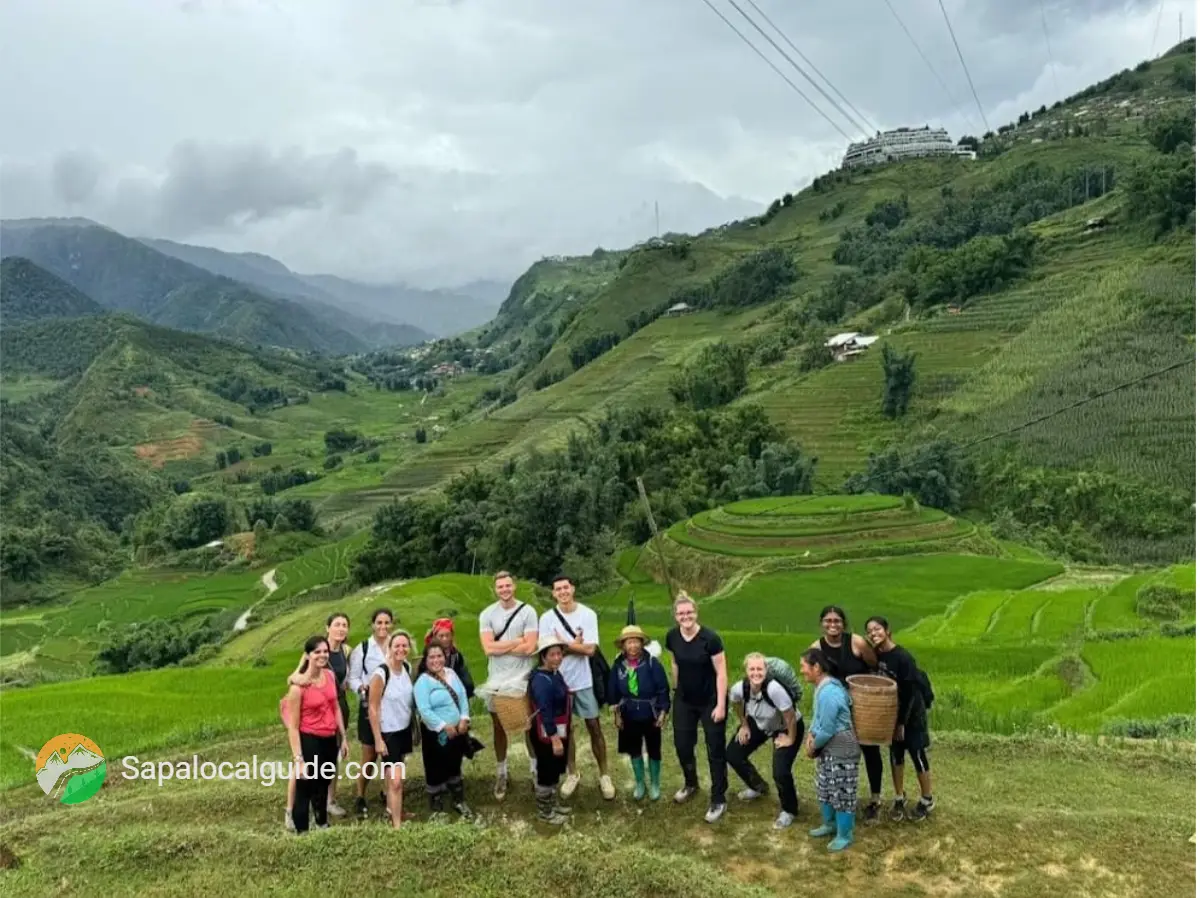
Trekking with a Local guide has many benefits. Guides know the best places to visit and the best viewpoints. They can help you meet local people, arrange meals, and set up overnight stays. They can also take you off the main paths to see terraced rice fields, follow streams, and explore forests.
Private or Group Trekking
You can pick between a private tour or a group tour.
Group Tours: These usually have small groups, about 10 people. Benefits include meeting new friends and lower costs. Short treks in Sapa start at $10. Group tours often stick to popular routes, so there’s less chance to explore new places.
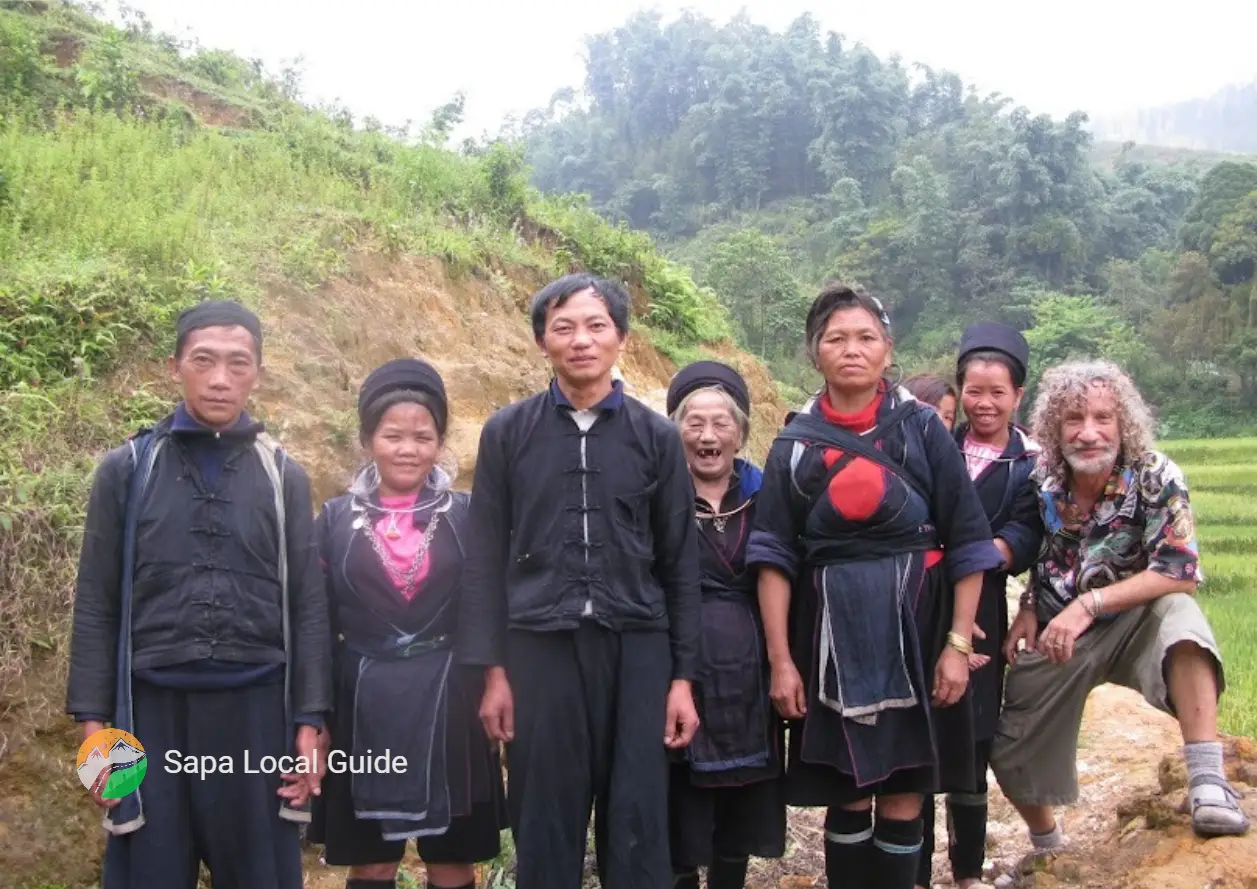
Private Trekking: Perfect for people who want to explore less common paths, walk slowly, take lots of photos, or might not walk quickly. Private tours can be adjusted to fit your preferred distance and how hard you want the trek to be. They also offer flexible options like pick-ups or special meal requests if needed.
Choosing the Right Trek Duration
Half a Day: This is a short trek that gives you a taste of the area. You'll stick to popular paths and tourist spots, but still see villages and amazing views. It's perfect if you can’t walk a lot but want to experience trekking.
Full Day: This offers more choices. You can trek in less known areas or popular routes. You’ll have enough time to explore beautiful rice fields and local villages. After the trek, you can relax in a comfortable hotel.
Multi-Day Trekking: Lasting from two to three days or even longer, this is the best choice. You’ll stay overnight with local families, learning about their way of life. On the second or third day, you’ll go to places where few tourists go, giving you a real adventure.
Choosing the Right Trekking Difficulty
The difficulty of trekking in Sapa depends on how long you trek, how much the land goes up and down, and the type of paths you’ll walk on (whether they are paved or dirt). Pick a trek that fits your fitness level and how much trekking experience you have.
Best Trekking Routes in Sapa.
The best trekking routes in Sapa take you through the most amazing spots. These paths lead to beautiful places that many people love to visit.
The area near Y Linh Ho Village, Ta Van Village, and Lao Chai Village is the best place to see terraced rice fields. These fields are the biggest and most stunning, and the villages are not far from Sapa town. Because of this, many tourists visit these spots. But don’t worry about crowds—these trails never get too packed. Think about whether you want to skip the most beautiful views just to avoid other people.
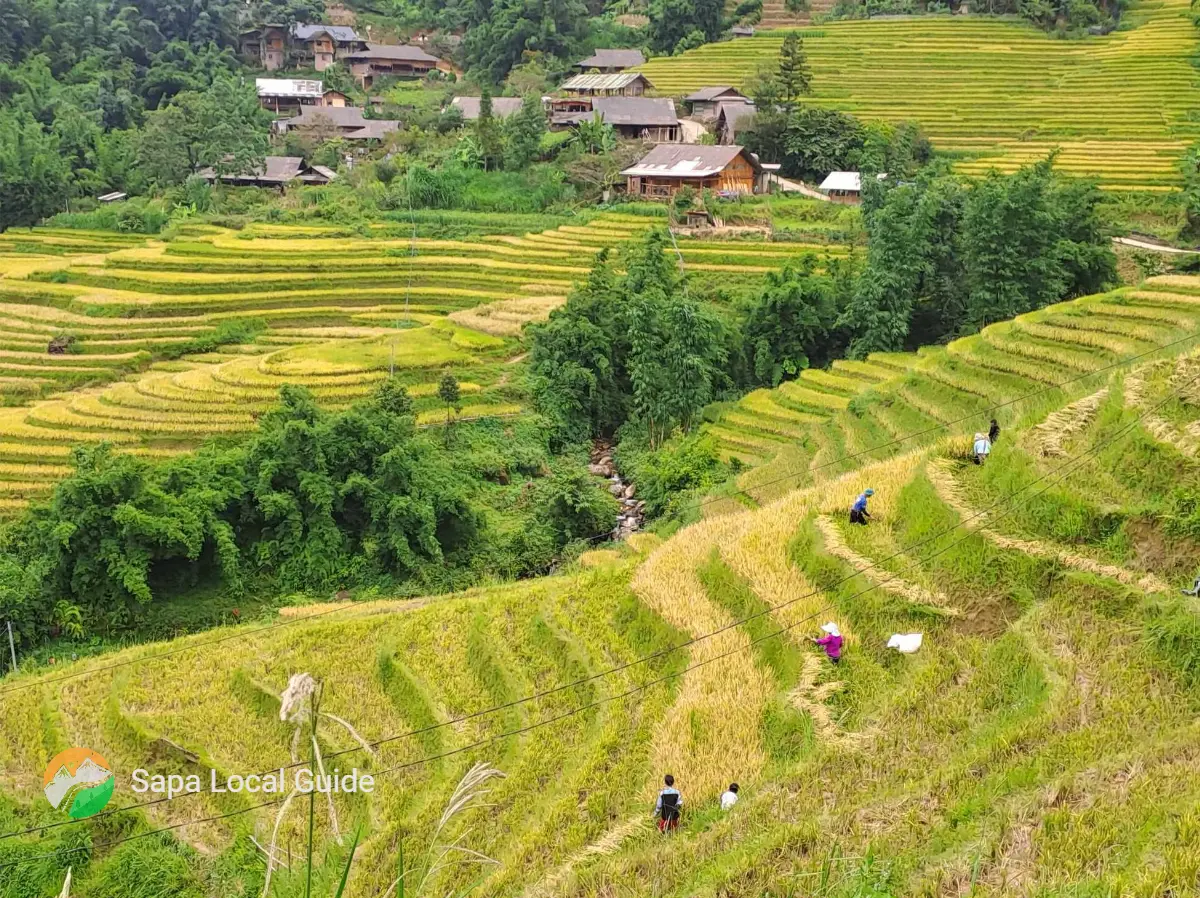
The local Trekking Tour to the Most Beautiful Spots in Sapa
Our local guide offers trekking tours in Sapa to some amazing spots using less-traveled trails. This way, you can see stunning views and have a quieter, more personal experience. Tell us what you like, and we’ll create the perfect trek just for you. Book your Sapa trekking tour now!
Sapa 1 Day

1 day experience,Rice fields, valley, villages. Moderate to challenging, Private,Vegan-friendlyCultural immersion & active adventure
Motorbike Tour

1 day experience,Rice fields,waterfall.Challenging,Private tours friendly Cultural immersion, active adventure
Sapa 2 Days

2 days 1 night experience. Moderate to challenging, adventure. Mountains, valleys, rice fields and villages. Vegan-friendly
Sapa 3 Days

3 days 2 night experienc, Moderate to challenging. Mountains, valley, rice fields & villages. Private tours. Vegan-friendly
Hidden Gems:
Explore stunning places away from the crowds. You'll find charming villages with ethnic communities and beautiful terraced rice fields. Although the fields might be smaller than in popular spots, they're still breathtaking. Visit less-known villages like Sa Seng, Hang Da, Hau Thau, Giang Ta Chai, and Ban Ho Village to experience their unique beauty.
Fansipan Trekking
In Sapa, you can go trekking in two cool ways. One is through the rice fields, and the other is up Fansipan Mountain. You can choose to trek Fansipan for 1 to 3 days. A 1-day trek is only for very fit people and starts really early in the morning. Most people pick the 2-day trek, where you get to sleep close to the top of the mountain overnight.
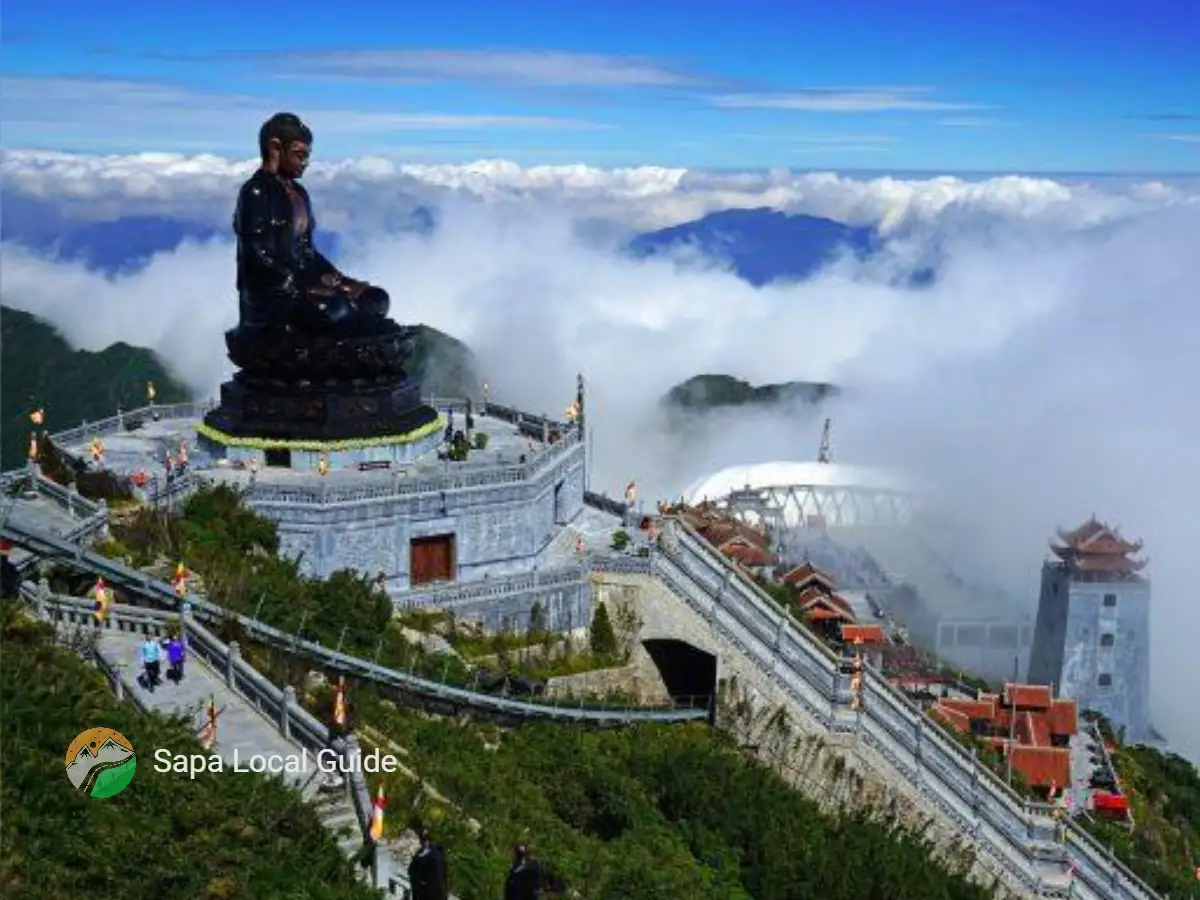
Climbing Fansipan is a big achievement since it's the highest mountain in Vietnam. However, you should pick this only if you really enjoy mountain hiking. Sapa is known for its beautiful terraced rice fields and unique ethnic groups, which you’ll miss on this trek. Fansipan is often covered by clouds, so you might not get the view you hope for. Instead, you can take the cable car from Sapa town. It saves you time and you can still enjoy your valley trekking.
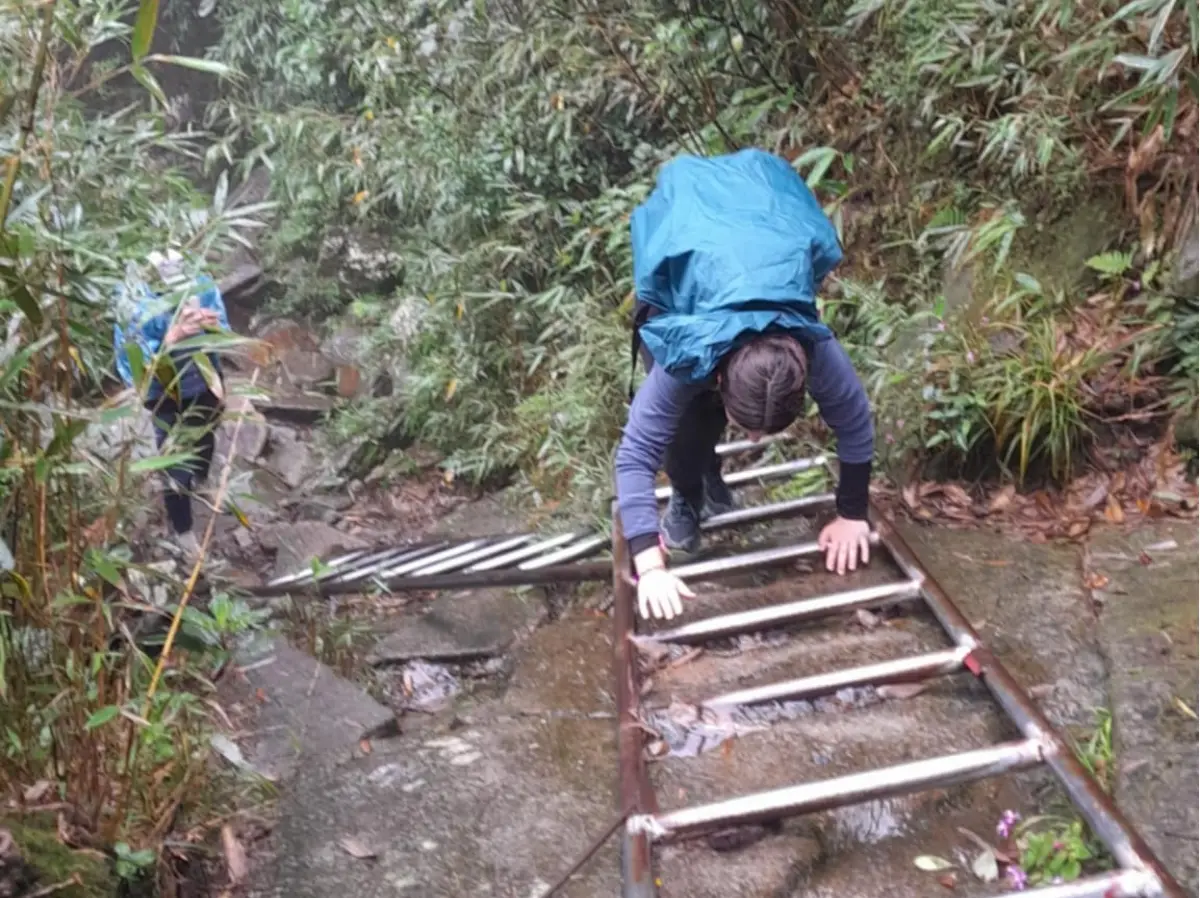
How to Plan Your Trekking Tour
This is the easiest way to plan your trek in Sapa. At Sapa local guide, we can handle everything for you. We’ll arrange your transfers between Hanoi and Sapa (or any other place). We’ll set up your Sapa trekking tour based on what you like—whether you prefer a group or a private tour, a short hike, or a longer trek. We can book local homestays or comfortable lodges, and anything in between. This means everything will be ready before you even get to Sapa.
Arranging Your Trekking Tour in Sapa
If you want to set up your trekking tour in Sapa after you arrive, you have several choices. Hotels, resorts, homestays, hostels, and travel agents all offer trekking tours. Make sure the tour fits your expectations. Local people may also offer trekking services, especially when you walk along Muong Hoa Road. Be clear about the price and duration before agreeing.
How to Prepare for Local Trekking in Sapa
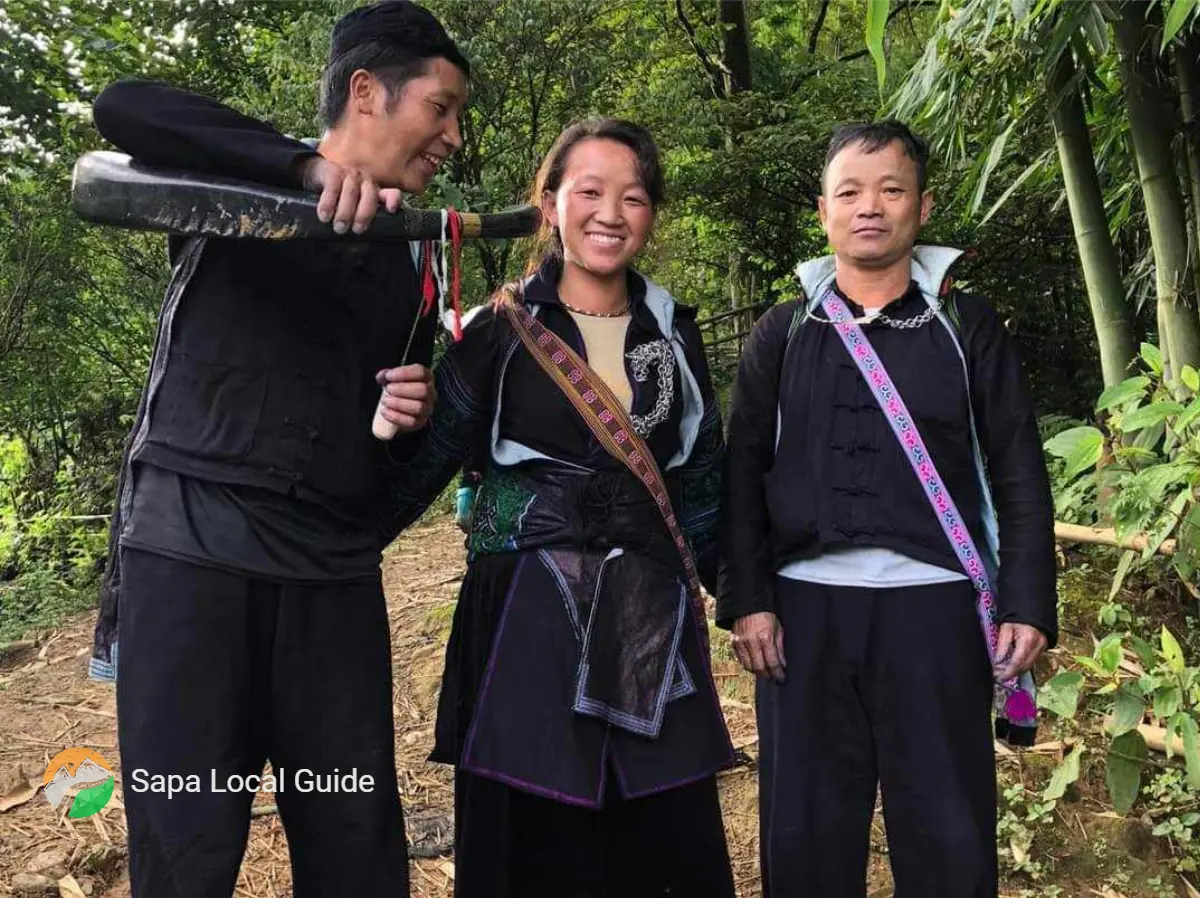
Here are some tips to help you get ready for your trek in Sapa:
What to Bring
Pack light to avoid carrying too much weight. For a one-day local trek, a small, waterproof backpack is best. Bring a lightweight rain jacket that you can easily store in your backpack if it rains or gets cold. Also, carry a small first aid kit with blister plasters, a phone, a camera, and extra batteries.
For overnight treks, bring an extra pair of clothes and toiletries. Keep your pack light, as you will need to carry it throughout your local trek. Bring a small amount of money for buying drinks, herbal baths, or rice wine at homestays.
Here’s a simplified and engaging rewrite:
Wear the Right Shoes
You don’t need big hiking boots unless you plan a long hike. Just bring good walking shoes, and if possible, waterproof ones. The trails in Sapa can get muddy and wet.
Pack Snacks and Energy Bars
There are no shops on the trekking routes. Tours might include meals and water, but bring extra snacks for more energy. Bring some cash to buy drinks and snacks at homestays, especially on multi-day hikes, so you don’t have to carry extra drinks for several days.
Check the Weather
If it’s going to be very hot, pack extra clothes and swimwear for a natural pool or waterfall. Even though guides usually provide water, bring extra on hot days to stay hydrated. If rain is coming, make sure you have the right rain gear. Remember, rain forecasts often mean a short, heavy shower rather than all-day rain. On rainy days, still use sunscreen because the sun can come out after a downpour.
Tips for Trekking in Sapa
Here are some tips to help you enjoy your trek:
Respect Local Customs
You’ll meet local ethnic groups during your trek. Their lives might be very different from yours. Be respectful and ask before taking their pictures. The rice fields are important to them, so don’t step into them.
You might have local people join your trek to help you through muddy paths and tough terrain. Later, they might try to sell you their handmade goods. If you're not interested, just say no politely with a smile. It’s better to handle this on your own instead of asking your guide for help, as the guide might be connected to these locals.
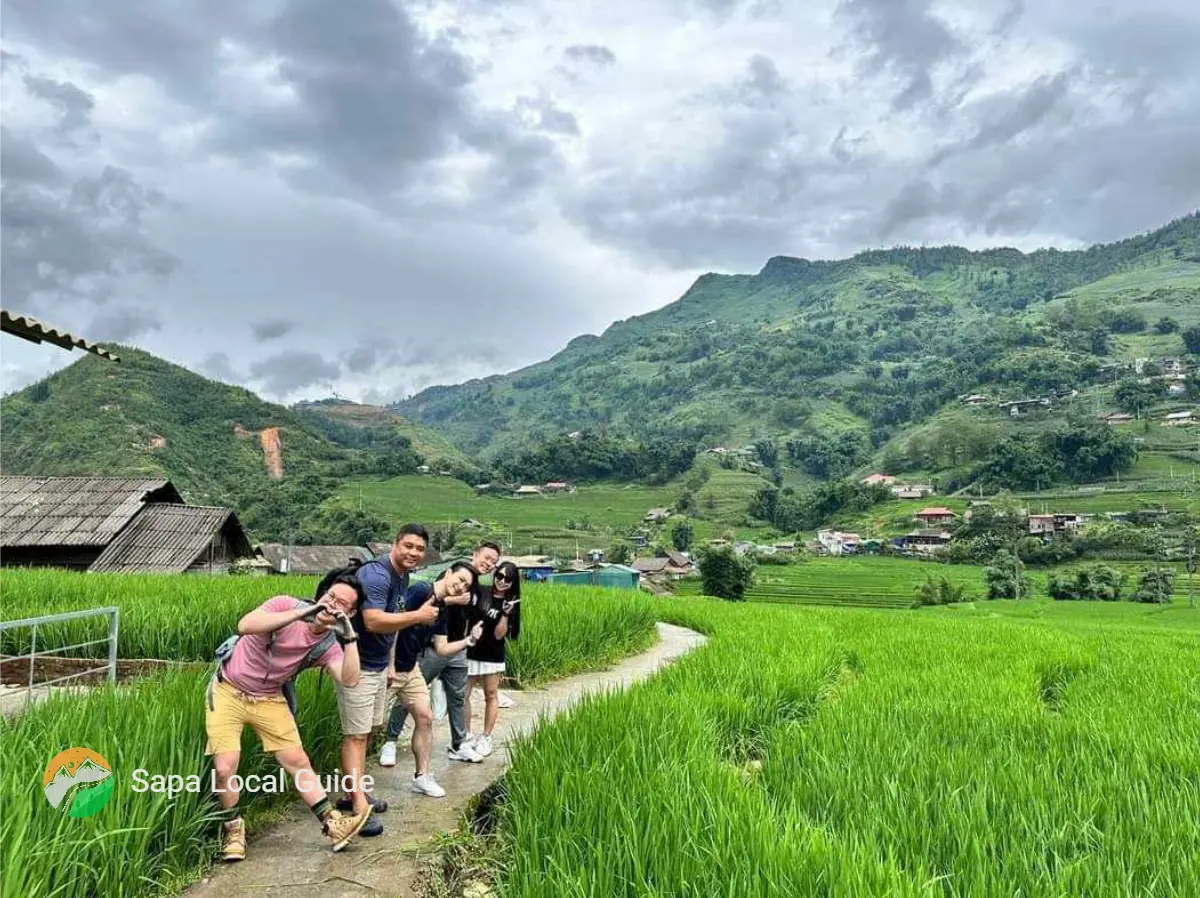
Be ready for weather changes
During the rainy season, sudden rain is common. Forecasts saying it will rain all day often mean rain at some point, usually in short, heavy bursts. After these showers, it usually dries up and gets hot again. In winter, temperatures can change a lot. It might be warm during the day while trekking but chilly in the evening. Wear layers so you can adjust easily to the changing weather.
Looking for a trekking tour in Sapa? Tell us what you need and want. We create special tours for small groups, families, and private experiences, so you get the most personal and real adventure. Whether you want a half-day tour, a longer journey through Sapa, or a private driver, we can help. As local experts, we’re excited to make your trip unforgettable, just for you.
Complete with itinerary, destinations, food, accommodation and tips!
